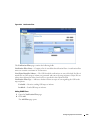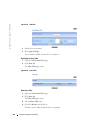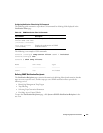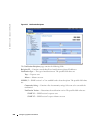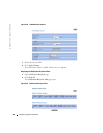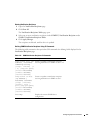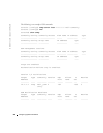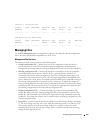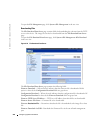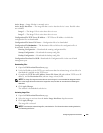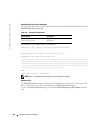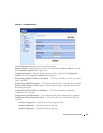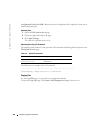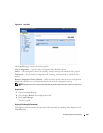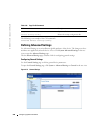
Configuring System Information 223
Managing Files
Use the
File Management
page to manage device software, the image file, and the configuration
files. Files can be downloaded or uploaded via a TFTP server.
Management File Overview
The management file structure consists of the following files:
•
Startup configuration file
— Retains the exact device configuration when the device is
powered down or rebooted. The startup file maintains configuration commands, and
configuration commands from the running configuration file can be saved to the startup file.
•
Running configuration file
—Contains all startup file commands, as well as all commands
entered during the current session. After the device is powered down or rebooted, all
commands stored in the running configuration file are lost. During the startup process all
commands in the startup file are copied to the running configuration file and applied to the
device. During the session, all new commands entered are added to the commands existing in
the running configuration file. Commands are not overwritten. To update the startup file,
before powering down the device the running configuration file must be copied to the startup
configuration file. The next time the device is restarted, the commands are copied back into
the running configuration file from the startup configuration file
•
Backup Configuration File
— Contains a backup copy of the device configuration. The
backup file changes when the running configuration file or the startup file is copied to the
backup file. The commands copied into the file replace the existing commands saved in the
backup file. The backup file contents can be copied to either the running configuration or the
startup configuration files.
•
Image Files
—System images are saved in two Flash sectors called images (Image 1 and Image
2). The active image
stores the active copy; while the other image stores a second copy. The
device boots and runs from the active
image. If the active image is corrupt, the system
automatically boots from the non-active image. This is a safety feature for faults occurring
during the boot upgrade process.
Version 3 notifications
Target
Address
Type Username Security
Level
Udp
Port
Filter
name
To
Sec
Retries
-------- ---- -------- ------- ---- ------- --- -------
OOB Notification Receivers
Target
Address
Type Username Security
Level
Udp
Port
Filter
name
To
Sec
Retries
-------- ---- -------- ------- ---- ------- --- -------



